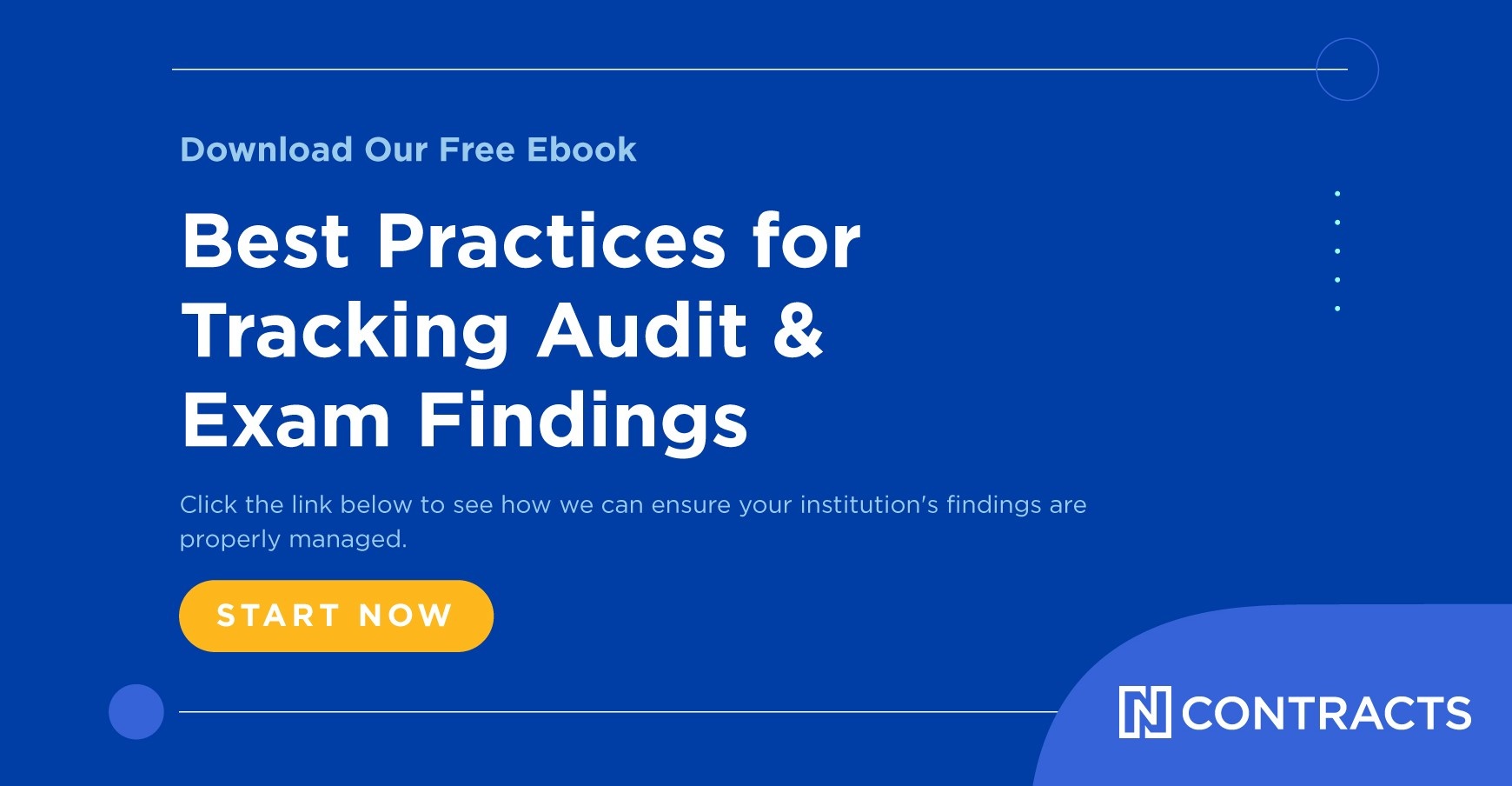For many bankers, no matter their role, making a big presentation at the Board of Directors meeting can be exciting at best and stressful at worst. In this post, the second in our "Beyond Banking" series, we'll be talking about new ideas to help you grow in your role and expand your skill-set beyond banking into leadership, negotiations, personal success, and more! In particular, this post will focus on practical tips you can use to ace your next Board meeting.
Whether you're going into your first or your thirtieth Board of Directors meeting, the prospect can be intimidating. The Board of Directors for your financial institution is a group of successful, high-profile business and community leaders. They guide your company's goals and planning; in some cases, they may even be the faces of your bank to the community.
In this post, you'll learn 12 tips to lead a rock-star Board meeting, and leave a positive impression on the leaders of your bank, credit union, or mortgage company.
Your presentations to the Board may vary in purpose and frequency. For example, you need to conduct training, provide updates on current projects; accurately convey goals and why they matter; share relevant individual, department, and company wins; ask for assistance or support if needed; and even get buy-in for future initiatives. In each of these situations, you need to make a good impression on behalf of yourself and everyone on your team.
Let's jump right in.
1. Understand Your Board's Goals
 Your Board of Director's is involved with the financial institution for a reason. They may have a vision for the role the bank, credit union or mortgage company can serve in the community. They are probably also focused on helping the financial institution grow and be more profitable. Do they come from a banking background or another industry entirely? Do they have personal goals that are being served by their position on the Board? Are their family members also employees of the bank, credit union, or mortgage company? By knowing who you're speaking to, and what their goals are, you can:
Your Board of Director's is involved with the financial institution for a reason. They may have a vision for the role the bank, credit union or mortgage company can serve in the community. They are probably also focused on helping the financial institution grow and be more profitable. Do they come from a banking background or another industry entirely? Do they have personal goals that are being served by their position on the Board? Are their family members also employees of the bank, credit union, or mortgage company? By knowing who you're speaking to, and what their goals are, you can:
- Compose a Targeted Presentation to Encourage Buy-In and Support
- Each of the above factors will have a big impact on how you compose your presentations. For example, if you have a more business-focused Board and are looking to get their approval for a big project, you may decide to spend more time on ROI (return on investment) of your proposed initiatives. Alternately, if your Board is more philanthropically inclined, you may decide to focus on the internal and community impact of your proposed project. That's one basic example - your reality will likely be more complicated. However, by knowing your audience, you can build presentations that really speak to your Board's goals for your institution.
- Show How Your Team is Contributing to Company-Wide Goals
- If your Board has outlined company-wide goals, it's a good idea to show how your team is contributing to them. Not only will this show that you are committed to the company as a whole, it will also help clarify you and your team's unique contributions. This is possible for any department in the organization. For example, if you're on the compliance team and the company-wide goal is improved profitability, you can show how new processes, software, or employees are saving time and/or money.
2. Don't Waste Any Time
 This is one of the most common things we hear: the Board is busy and they don't like having their time wasted. Your presentation should be as clear and concise as possible. You want to get your point across clearly, and make sure that there is room to spare. Wasted time is not only frustrating, but it also can lead to boredom and negative anticipation for your next presentation. If you value job security and/or have career goals, it's a good idea to avoid creating time-wasting presentations.
This is one of the most common things we hear: the Board is busy and they don't like having their time wasted. Your presentation should be as clear and concise as possible. You want to get your point across clearly, and make sure that there is room to spare. Wasted time is not only frustrating, but it also can lead to boredom and negative anticipation for your next presentation. If you value job security and/or have career goals, it's a good idea to avoid creating time-wasting presentations.
A good editor will go a long way. If someone at your bank, credit union, or mortgage company is a good public speaker or a good editor, you may want to reach out to them to have them edit your work. The Marketing team can be a good resource for this kind of help.
Note: some people dread leading required presentations or training, because they feel like a burden. However, if you're not excited about the presentation, it's unlikely that your Board will be engaged. Challenge yourself to be creative in your presentations; make it surprising, numbers-oriented, interactive, or otherwise engaging. Trust that your extra effort will be appreciated.
3. Focus on Numbers and Statistics
Making a point clearly in a way that inspires inspires action or will be remembered is an art form. Successful speakers use a few different "hacks" to write presentations that achieve one or both of these goals. One of these hacks is to lean heavily on numbers and statistics to make your point.
Why? Numbers and statistics are extremely memorable. They lend themselves to data visualizations that are also memorable. They also help crystallize the significance or impact of a given topic. In addition, numbers and statistics are credible. When you share them, it helps prove your point, and also makes you seem well-informed.
That's why we recommend using facts and figures in your presentation. You may consider a takeaway statistic at the beginning or end of your presentation. If you're in Compliance, consider using numbers to explain risk that needs to be addressed or that has been reduced.
Your Sales team is probably using numbers and KPIs (key performance indicators) already in their internal and Board-facing reporting. If you're new to this strategy, you may want to connect with internal sales leaders to get a bit more insight on what types of numbers are most effective for their executive and Board-level reporting.
4. Prioritize Effectively
In a Board meeting environment, your time is limited. It's very possible that you will only have 30 minutes to present on your subject. There is very little time to waste.
Make sure that you have been clear with yourself about the goal of your presentation, and that your message aligns with that priority. Decide what is a "need to have" (i.e. approval for a time-sensitive project), and what is a "like to have." Consider alternate venues for raising those "like to have" topics, and focus your energy in the meeting on the essentials. Make sure that you start with the most important topic so that if you run out of time, you still accomplished what you needed to. If you have extra time, use it to cover those other goals.
As a financial professional, it's likely that you're extremely busy, and you may be trying to thread more than one needle with your Board presentation. In that scenario, prioritization is even more important. If you're covering a few different topics, it's easy to lose an audience in confusion. That's why it's important to prioritize; ensure that everyone is on the same page and understands the relative importance of the topics at hand.
5. Highlight Action and Emphasize Outcomes
 A hallmark of executives is that they tend to be good decision makers. As such, they are action-oriented. They tend to care about success, and focus on outcomes. They are leaders because they have vision and know how to encourage others to get things done, but even though they are successful decision-makers, they are not often in the trenches making each and every small decision. (These are generalizations, and may not be accurate for every Board member or senior leader at your financial institution, but there is some truth to them.)
A hallmark of executives is that they tend to be good decision makers. As such, they are action-oriented. They tend to care about success, and focus on outcomes. They are leaders because they have vision and know how to encourage others to get things done, but even though they are successful decision-makers, they are not often in the trenches making each and every small decision. (These are generalizations, and may not be accurate for every Board member or senior leader at your financial institution, but there is some truth to them.)
By focusing on actions and outcomes, you can speak to your Board in language they are likely to appreciate and understand.
This is especially true if you need their help making a big decision. They will need to understand the outcomes of either decision in order to make it, and you will need to explain them.
If you don't need their help making a decision, but are rather just conveying something important, the action taken and/or outcomes of that action are likely to be more memorable and more tangible. For example, say you're providing an update on a successful public event. Instead of saying "the recent event went well," try using statistics and outcomes by saying something like "we exceeded our expected attendance by 15%, which directly improves our brand presence in the community and contributes to positive company culture" - or something like that.
6. Clarify Challenges
In the same vein as the above tip, make sure that your presentation is improving clarity, not adding complexity. The Board doesn't want to hear a laundry list of issues. They want to know the most important challenges and how they're being solved - or how they can help solve them.
When presenting those issues, make sure to keep them clear and concise. One way to do that is to strive to be as specific as possible. By explaining the challenge in the clearest possible terms, you will help them get a grasp on it quickly. Then, they can focus their attention and energy on helping you solve it.
7. Pitch Solutions
Wherever possible, provide possible solutions to challenges. When you're in a difficult situation, it's easy and human to become a bit negative or concerned. However, with an action-focused Board, they are likely to become impatient if all you do is describe difficulties.
Imagine that you spend five minutes describing a problem. During that time, the Board is likely wondering why you're telling them, what you plan to do about it, and how they can help. It won't look very good if they ask any one of these questions and you're stumped. On the other hand, it's likely that they will respond much better if you can outline potential solutions and how they can help.
Your Board wants the financial institution and all the individuals therein to be successful. From that perspective, finding agreeable solutions to potential pitfalls is a top priority for them. If you're proactively moving the business towards good solutions, it shows that you're on the same team.

8. Be Confident
In front of a room full of leaders, many presenters would be nervous. Public speaking is a skill! It's also a top fear. That's understandable; to be honest, it's one of my biggest fears, too.
That said, if you're not confident, delivering a good presentation is going to be difficult. Here are a few tips to help you be more confident, if you do have a fear of public speaking:
- Reflect on exactly what you're afraid of, and think of solutions for mitigating it.
- Prepare diligently, to reduce the risk that you freeze.
- Be vulnerable. It's likely that others can relate to a fear of public speaking, so you can feel relatively safe admitting that to your group. You don't need to be self-deprecating; however, if your voice quavers, you lose your train of thought, or you begin speaking too quickly, it may help to show a little bit of vulnerability. Just say, "I'm a little nervous about public speaking," smile, and keep going!
- Remember why you're there. If you're giving a presentation, it's obviously an important topic. Simply reminding yourself of what you're hoping to achieve may be enough to keep you motivated and keep your fear in perspective.
- See your audience as real people and valued colleagues. This can help reduce the pressure and also foster your ability to relate more closely with your audience. You're probably less nervous talking in front of people you know well. Assume that you already know the Board well, so that your presentation is professional, relaxed, and approachable.
There are a lot of resources out there if you are afraid of public speaking. You're not alone!
9. Build Rapport Outside the Meetings
 If possible, try to build relationships outside of the Board meetings. By building rapport, your relationships become more trusting. The benefits of more trust are manifold. Having difficult conversations is likely to be less stressful. Engagement in meetings is likely to be higher. Getting buy-in on new ideas may be easier.
If possible, try to build relationships outside of the Board meetings. By building rapport, your relationships become more trusting. The benefits of more trust are manifold. Having difficult conversations is likely to be less stressful. Engagement in meetings is likely to be higher. Getting buy-in on new ideas may be easier.
Depending on your role in the institution, you may have more access to the Board. If you don't have much access, that's okay. A simple hello or a post-meeting chat can go a long way. These small gestures help show that you're an active, engaged, respectful member of the community that is your financial institution.
10. Leverage the Board's Strengths
Depending on your Board members, you may have people with decades of experience in banking, marketing, philanthropy, or any number of other fields. These people have years of experience, tips for success, and valuable ideas that they bring to the table. Try to leverage all that expertise and insight as much as possible.
In addition, make sure to tailor your questions and comments to their strengths. Do you need to hash out big, complicated issues in a Board meeting? Maybe, but probably not. Try to tailor your questions to your audience. Ask what they can answer. Focus on questions that can really lead to productive conversations. There are a lot of questions your Board can't and shouldn't answer; be conscientious of the setting and the individuals as you decide what issues to raise and how you raise them.
Depending on your department and the type of presentation that you're doing, this may be more or less possible, but there are almost always opportunities to make the best use of their time - and yours!
11. Provide the Right Materials
This is so important. Consider sharing presentation materials before the meeting so that the Board has a chance to review. If it's possible to provide takeaway materials that will help them in the future, make sure to do so!
Your audio-visual tools are also part of the materials you need to consider. Will Board members be phoning or video conferencing into the meeting? Work with your team to ensure that the equipment is prepared to accommodate remote Board members if needed.
12. Listen Carefully at the Beginning and the End of the Meeting
Make sure to pay close attention to what the Board is chatting about at the beginning - and the end - of the Board meeting. By listening at the outset of the meeting, you'll get a sense for the overall mood, and probably gain insights about what the Board is expecting to discuss. If their priorities aren't on your agenda, make a note and think about how to address them, if possible.
By listening at the end, you'll gain valuable insights into what ideas and concepts are sticking. You can use these observations to craft your next presentation. You can also use them to have more valuable one-on-one or small group meetings with Board members and Senior leadership at a later date.
These are just a few tips designed to help you improve your next Board presentation. This blog, and others like it, are part of our mission to help you grow personally and professionally.
Strategic Planning: Where to Start


 This is one of the most common things we hear: the Board is busy and they don't like having their time wasted. Your presentation should be as clear and concise as possible. You want to get your point across clearly, and make sure that there is room to spare. Wasted time is not only frustrating, but it also can lead to boredom and negative anticipation for your next presentation. If you value job security and/or have career goals, it's a good idea to avoid creating time-wasting presentations.
This is one of the most common things we hear: the Board is busy and they don't like having their time wasted. Your presentation should be as clear and concise as possible. You want to get your point across clearly, and make sure that there is room to spare. Wasted time is not only frustrating, but it also can lead to boredom and negative anticipation for your next presentation. If you value job security and/or have career goals, it's a good idea to avoid creating time-wasting presentations.  A hallmark of executives is that they tend to be
A hallmark of executives is that they tend to be 
 If possible, try to build relationships outside of the Board meetings. By building rapport, your relationships become more trusting. The benefits of more trust are manifold. Having difficult conversations is likely to be less stressful. Engagement in meetings is likely to be higher. Getting buy-in on new ideas may be easier.
If possible, try to build relationships outside of the Board meetings. By building rapport, your relationships become more trusting. The benefits of more trust are manifold. Having difficult conversations is likely to be less stressful. Engagement in meetings is likely to be higher. Getting buy-in on new ideas may be easier.

